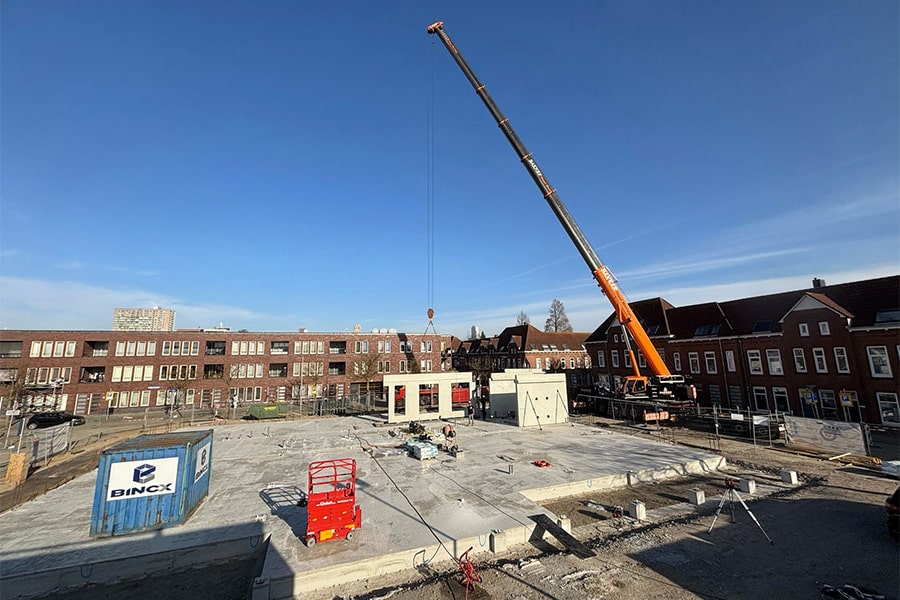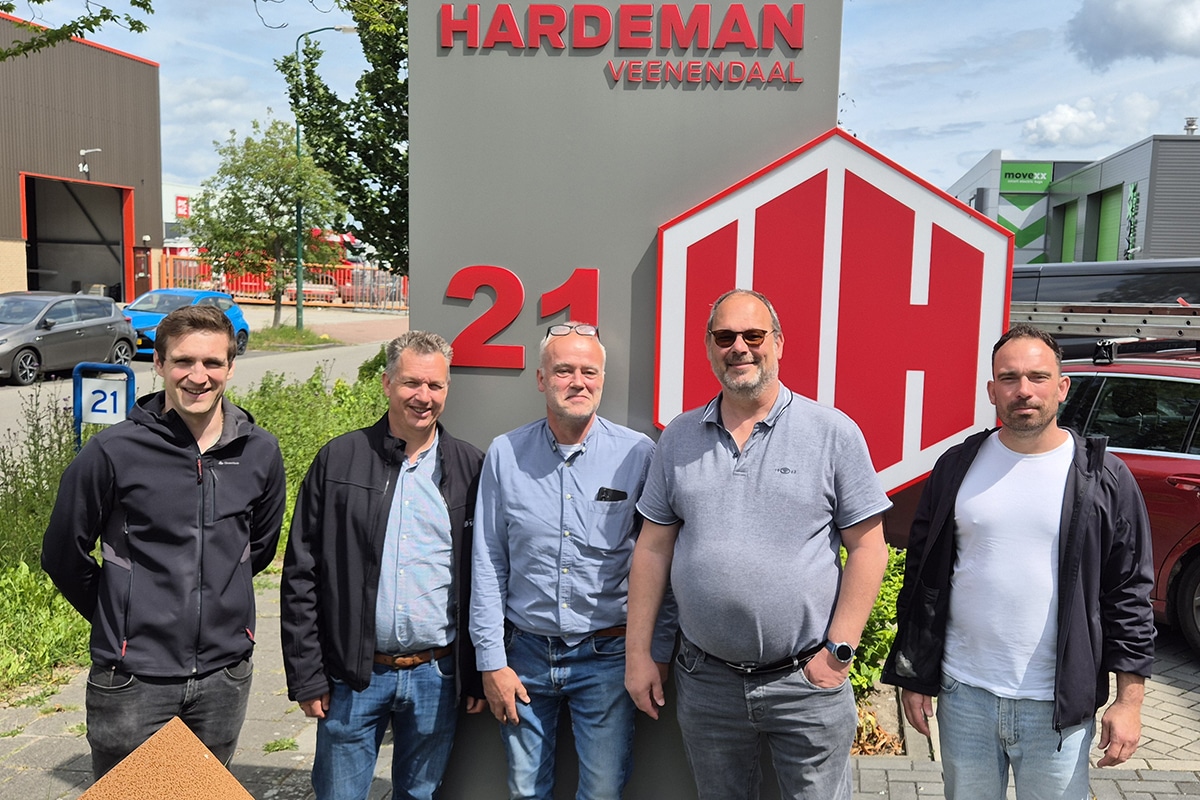
New underpass for improved flow and safety
On behalf of ProRail, contractor combination Mobilis-Hegeman is currently building the railroad underpass Ouddiemerlaan in Diemen. The old railroad crossing was causing dangerous situations and delays for traffic. Construction started in August 2020 and the project will be completed in early 2023.

Ouddiemerlaan is an important access road for Diemen, which is surrounded by many roads and tracks. Luuk van Hengstum, project manager at ProRail: "In the old situation there was a level crossing with a platform on either side of Diemen station. This caused restrictions for train traffic and delays for road traffic. It was therefore decided to replace this level crossing with an underpass. There was no room to move and the municipality wants to develop the area further. Therefore, the underpass will be located where the existing level crossing was."

Tender
Several interests are involved in such a large project. For example, in addition to ProRail, the municipality, the Ministry of Infrastructure and Water Management and NS are also involved. The plans were further developed together with an engineering firm. Van Hengstum: "A tender took place and in the summer of 2020 we were able to award the project to the Mobilis-Hegeman combination, which has a lot of experience with this type of project. Artworks, we call it. It applied for the permits and started building a new P+R area and moving the level crossing. This also required the construction of a swing road. Then the rail deck was built and driven in during a track outage and construction of the tunnel began. Finally, the finishing touches with elevators, bicycle racks, tiles and benches and an ecological zone along the track will follow. The new underpass will be put into operation in early 2023."
The start of the project coincided roughly with the moment corona appeared in our country. Jaap van Beek, project manager of executive contractor combination Mobilis/Hegeman: "Especially in the preparation and design phase, working from home had considerable impact. We are proud that we were still able to get through this phase successfully. In the execution, these challenges play less of a role."

Unsafe situations
The new underpass will also have a station function. There will be platforms, a station square, elevators, stairways and NS gates including cabling and security. To ensure an attractive, green slope, the tunnel tunnels will be widened outside the tracks. The underpass will have two lanes of traffic, a bicycle path and a pedestrian path. Van Hengstum: "It was getting busier and busier on that line and a lot of school children have to cross, so that could create unsafe situations. That's why the choice for an underpass was made."
To avoid inconvenience to road users and train passengers, temporary facilities were installed during three weekend out-of-service periods. Van Beek: "At those times, the level crossing was moved after the platform, platform roof and noise barriers were demolished. Construction pit and piles were also installed under the track and the track deck was driven into place. During those weekends, our partner Volker Rail took care of all the track work and all the work around cables and pipes, including moving the technical room. We were then working with about a hundred people at a time. Those are exciting and important moments: the train has to be able to run again on Monday morning. As a project team we are proud that we were able to complete this successfully and ProRail was also very satisfied. Because of the particularly good preparation, this went smoothly."
Construction of the tunnel itself began last September. Van Beek: "We are structurally on schedule, and that for a project with a three-year duration from contract award to completion. We also have no problems with material deliveries. We prepare things well and order on time."

Sustainable concrete grant
Sustainability plays a big role in construction. In this project, subsidies became available for sustainable concrete. Van Hengstum: "The contractor had experience with sustainable geopolymer concrete, but it was not yet fully developed. We are using the grant to test geopolymer concrete on this project in accordance with the new draft guidelines for binders. Eventually, this type of concrete will then become usable by other parties, which will also make them score higher in terms of environmental requirements. I expect this to be a common concrete type for our works within a few years."
Sustainable concrete, then, in which cement has been replaced by geopolymers, which have the same function as cement. After all, the extraction and production of cement is highly environmentally damaging. Yet there is one downside to this innovative solution, Van Beek explains. "The tricky thing about geopolymer concrete is that it doesn't harden as quickly, so the formwork has to stay in place longer. Usually you can remove them after two days, in this case after four. Also, you can't load the poured floor with vehicles until later, which affects logistics. Both concrete types do fully cure after 28 days. In this project, we are applying it in the top floor leg."

For now, both parties are very satisfied with the cooperation. For Mobilis-Hegeman, it is also not the first time it has taken on such a project. Previously, the combination realized underpasses in Assen, Bilthoven, Heiloo and Elst, among others. Van Beek: "I am very proud of my team and the cooperation with ProRail. We deliver quality here and work safely and on time. We don't get any complaints from the surrounding area either, partly due to ProRail's good communication."



